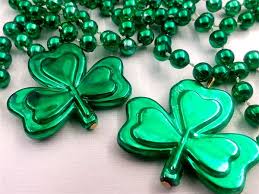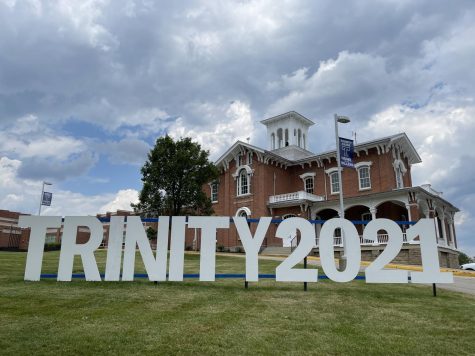Leprechaun origins remain mystery in U.S.

This image was accessed via Goole Images under the Creative Commons License.
A lot of lore around St. Patrick’s Day is centered on luck. From leprechauns to four leaf clovers, there are a variety of talismans associated with the celebration.
Every March, images of tiny, green-clad men with top hats and pots of gold show up on everything from posters to t-shirts alongside four leaf clovers, lucky talismans and everything Irish. But who, or what, are these mythical luck-bringing beings?
Leprechauns, likely from the Irish luchorpán (literally “small body”), are figures of Irish folklore, and they likely grew from Celtic belief in fairies. Tales referencing leprechauns go back hundreds of years, to a time when the distinction between magic and reality wasn’t quite so clear.
Said to be inhabitants of underground caves or hollow trees, leprechauns are the shoe makers of the fairy world. They spend most of their lives underground and gained recognition over time as being fiercely protective of their treasure, that prolific pot of gold, employing all manner of trickery to do so. Historically, there are no female leprechauns, adding additional mystique to their origins.
The association of the color green with leprechauns is a relatively new development. They were said to dress in red until possibly the 18th century, perhaps due to the growing American association of the color green with Irish culture. Nevertheless, the color stuck, and today green is plastered everywhere in the weeks leading up March 17.
Oddly, despite how abundant leprechauns are in the American celebration of St. Patrick’s Day, they are not quite as prevalent in the Irish celebration of the day. Despite a large Irish immigration to the U.S. in the late 19th and early 20th centuries, many Americans remained unaware of the true origins of leprechauns.
Over time, Americans adopted their own, often amusing, explanations for leprechauns.
Junior Jaidyn Sebetich contributed a possible origin story: “I think the leprechaun originated in the early 1700s in Ireland to make children think that there was a pot of gold at the end of a rainbow… I do think that there was a shred of truth to the legend of leprechauns because I think Irish people wanted some information to stay [a secret] in the Irish culture.”
No matter where leprechauns may have originated, today they remain an institution of St. Patrick”s Day. They bring the promise of luck and prosperity despite their mischievous ways and add a fantastical aspect to the celebration.
“I think the legend of leprechauns is both silly while also important. It is a fun piece of history that is important to Ireland. [And,] it is a pretty silly piece of history since they are supposed to make tons of mischief… [while] I have not really believed in leprechauns as luck, [I] rather believe they are full of fun and mischief,” Sophomore Zach Losko reflected.
Regardless of how a person celebrates St. Patrick’s Day, leprechauns are a magical way to add a little extra fun to the day. Consider looking for their fabled treasure this year; it just might be a lucky day.
Outside of school, you can usually find Emma dancing, solving word puzzles, buried deep inside a book, or dreaming of some new and delicious dessert to...





